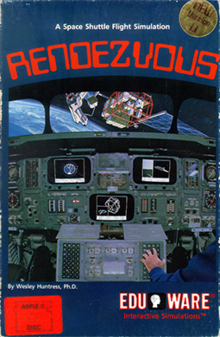
John Watts Young was an American astronaut, naval officer and aviator, test pilot, and aeronautical engineer. He became the 9th person to walk on the Moon as commander of the Apollo 16 mission in 1972. He is the only astronaut to fly on four different classes of spacecraft: Gemini, the Apollo command and service module, the Apollo Lunar Module and the Space Shuttle.
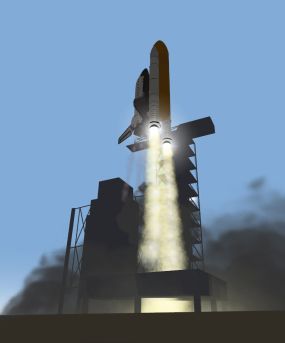
Orbiter is a space flight simulator program developed to simulate spaceflight using realistic Newtonian physics. The simulator was released on 27 November 2000; the latest edition, labeled "Orbiter 2016", was released on 30 August 2016, the first new version of the simulator since 2010. On 27 July 2021, Dr Schweiger announced to the Orbiter Community that Orbiter is being published under open source MIT license.
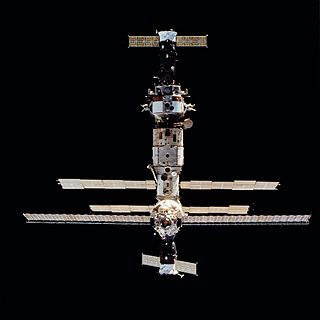
STS-63 was the second mission of the US/Russian Shuttle-Mir Program, which carried out the first rendezvous of the American Space Shuttle with Russia's space station Mir. Known as the 'Near-Mir' mission, the flight used Space Shuttle Discovery, which lifted off from launch pad 39B on February 3, 1995, from Kennedy Space Center, Florida. A night launch and the 20th mission for Discovery, it marked the first time a Space Shuttle mission had a female pilot, Eileen Collins, and the first EVAs for both a UK born astronaut, Michael Foale, and a US astronaut of African heritage, Bernard A. Harris, Jr. It also carried out the successful deployment and retrieval of the Spartan-204 platform, along with the scheduled rendezvous and flyaround of Mir, in preparation for STS-71, the first mission to dock with Mir.

As the third mission of the US/Russian Shuttle-Mir Program, STS-71 became the first Space Shuttle to dock with the Russian space station Mir. STS-71 began on June 27, 1995, with the launch of Space Shuttle Atlantis from launchpad 39A at the Kennedy Space Center in Florida. The Shuttle delivered a relief crew of two cosmonauts Anatoly Solovyev and Nikolai Budarin to the station and recovered Increment astronaut Norman Thagard. Atlantis returned to Earth on July 7 with a crew of eight. It was the first of seven straight missions to Mir flown by Atlantis, and the second Shuttle mission to land with an eight-person crew after STS-61-A in 1985.

Richard Alan Mastracchio is an American engineer and former NASA astronaut. He has flown on three NASA Space Shuttle missions as a mission specialist in addition to serving as a flight engineer on the Soyuz TMA-11M long-duration mission aboard the International Space Station. He is currently the senior director of operations for commercial resupply services at Orbital ATK.

A space rendezvous is a set of orbital maneuvers during which two spacecraft, one of which is often a space station, arrive at the same orbit and approach to a very close distance. Rendezvous requires a precise match of the orbital velocities and position vectors of the two spacecraft, allowing them to remain at a constant distance through orbital station-keeping. Rendezvous may or may not be followed by docking or berthing, procedures which bring the spacecraft into physical contact and create a link between them.
Sublogic Corporation is an American software development company. It was formed in 1977 by Bruce Artwick, and incorporated in 1978 by Artwick's partner Stu Moment as Sublogic Communications Corporation. Sublogic is best known as the creator of the Flight Simulator series, later known as Microsoft Flight Simulator, but it also created other video games such as Night Mission Pinball, Football, and Adventure on a Boat; educational software; and an Apple II graphics library.
Wesley T. Huntress, Jr. is an American space scientist. An astrochemist and space scientist, Huntress worked for about twenty years at NASA's Jet Propulsion Laboratory. During the 1980s, he was also a video game designer, producing games for Apple computers. In 1988, Huntress moved to NASA headquarters, where he would serve in several positions, including Director of NASA's Solar System Exploration Division and Associate Administrator for Space Science.
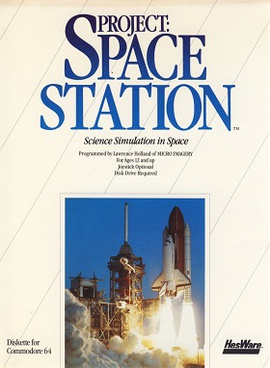
Project Space Station is a simulation game written for the Commodore 64 computer published in 1985 by HESware. It was ported to the Apple II and DOS in 1987.
Edu-Ware Services, Inc. was an educational and entertainment software publisher established in 1979 by Sherwin Steffin and Steven Pederson. It was known for its adventure games, role-playing video games, and flight simulators for the Apple II series of computers.

The R-bar pitch maneuver (RPM), popularly called the rendezvous pitch maneuver or backflip, was a maneuver performed by the Space Shuttle as it rendezvoused with the International Space Station (ISS) prior to docking. The Shuttle performed a backflip that exposed its heat-shield to the crew of the ISS that made photographs of it. Based on the information gathered during the rendezvous pitch maneuver, the mission team could decide that the orbiter was not safe for re-entry. They may have then decided either to wait on the ISS for a rescue mission or attempt extra-vehicular activity to repair the heat shield and secure the safe re-entry of the orbiter. This was a standard procedure recommended by CAIB for all space shuttles docking to the International Space Station after a damaged heat shield caused the Columbia disaster.

Shuttle is a space flight simulator game developed by Vektor Grafix and published by Virgin Games. It was released in 1992 on the IBM PC, Amiga and Atari ST.
A space flight simulation is a genre of flight simulator video games that lets players experience space flight to varying degrees of realism. Common mechanics include space exploration, space trade and space combat.
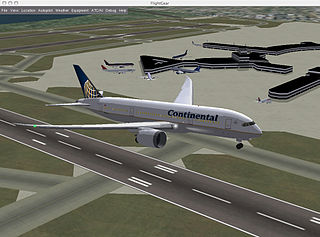
A flight simulation video game refers to the simulation of various aspects of flight or the flight environment for purposes other than flight training or aircraft development. A significant community of simulation enthusiasts is supported by several commercial software packages, as well as commercial and homebuilt hardware. Open-source software that is used by the aerospace industry like FlightGear, whose flight dynamics engine (JSBSim) is used in a 2015 NASA benchmark to judge new simulation code to space industry standards, is also available for private use. A popular type of flight simulators video games are combat flight simulators, which simulate combat air operations from the pilot and crew's point of view. Combat flight simulation titles are more numerous than civilian flight simulators due to variety of subject matter available and market demand.

Space Shuttle: A Journey into Space is a space flight simulator game designed by Steve Kitchen for the Atari 2600 and published by Activision in 1983. It is one of the first realistic spacecraft simulations available for home systems. Space Shuttle was adapted to the Atari 8-bit computers and Atari 5200 by Bob Henderson (1984), then ported to the ZX Spectrum (1984), Commodore 64 (1984), Amstrad CPC (1986), and MSX (1986). The 1984 Activision Software catalog also mentions an Apple II version.

FS1 Flight Simulator is a 1979 video game published by Sublogic for the Apple II. A TRS-80 version followed in 1980. FS1 is the first in a line of simulations from Sublogic which, beginning in 1982, were also sold by Microsoft as Microsoft Flight Simulator.

Night Mission Pinball is a pinball simulation video game published by Sublogic in 1982. It was developed by Bruce Artwick for the Apple II, then ported to the Atari 8-bit computers, Commodore 64, and IBM PC.
Fore! is a 1982 video game published by Automated Simulations.
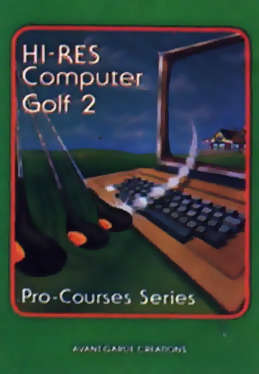
Hi-Res Computer Golf 2 is a 1982 video game published by Avant-Garde Creations for the Apple II.
